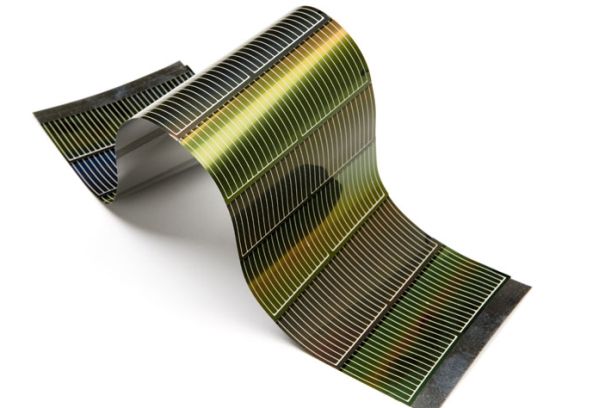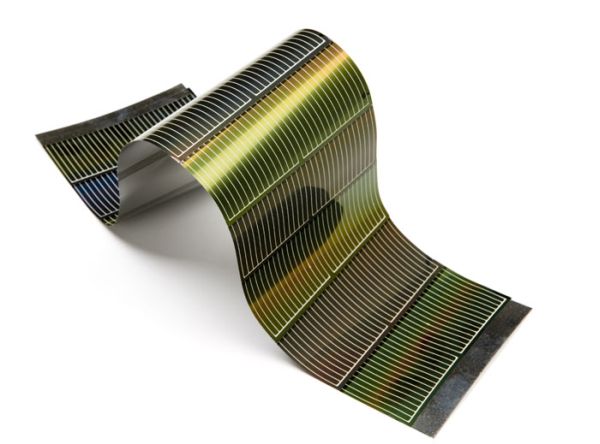
Inkjet printers oozing out solar panels in dozens! Just consider that – would you make it your business or be satisfied with using the product for your household needs alone? Whatever you do, here is a technology for generating green energy at an enviably affordable price. It’s the future of all energy generating technologies. It’s something that is going to take away one’s right to demur from using green solar energy. Just see how easy it’s going to be – researchers of New Jersey Institute of Technology (NJIT), led by Dr. Somenath Mitra, acting chair of NJIT’s Department of Chemistry and Environmental Sciences, are sure that what they have developed is a printable solar cell. One could go on printing it on a flexible sheet of plastic, paste it on the house wall and instantly get enough clean energy to meet all the needs of a household.
All one needs to have at home is an unassuming inkjet printer. Consumers can then slap the finished product on a wall, roof or billboard to create its own power stations. They call it the tech-future as nothing like that was ever heard before. Producing responsible energy has its own challenges. The nagging need of developing large scale infrastructure is one of them. Our own clean & green solar energy, right now, is thought together with purified silicon and silicon crystal wafer. Ever thought these could be easily affordable to everyone? However green it might be, its acceptability has not grown beyond a point as it affects one’s finances too heavily.
Need for change :
The technology one applies conventionally for producing solar energy with photo-voltaic solar panels has to change face to remain contextual in the long term. Researchers have already reached at a solution. Thin film deposition technology has been around for quite some time now in this field. Initially, it had only been able to suggest an alternative to what we had previously. Now, it is catching popular imagination. It holds the promise of altering an old convention in green energy. Also, the goal of achieving a grid parity is waiting to be met. The NJIT team’s innovative take on it could really pave the way towards all those cherished goals.
Whatâs Next?
It’s only a matter of some time before team NJIT’s labor of love could bear fruits. The thin-film printable PV, they are talking about, could actually replace those old 1.7 m by 0.8 m by 5 cm black-paned rectangles on the rooftops and arrayed across wide open fields. Efforts by individual companies like IBM, HelioVolt Corporation and Sanyo state this future aspiration in no certain terms. A thin film solar PV is a real talk of the town now. Things are being broken down to organic levels and polymer is the word driving solar energy technology in that direction.
Thin film solar cell :
Whatâs new
Thin film solar cell works much in the same way as those conventional and rather heavily-built panels. Sunlight generates positive and negative charges as it bombards those solar panels. Electricity is generated by separating the two charges in two channels. Electrodes take care of that much. NJIT deserted those traditional panels to use a carbon nano-tubes complex. The first advantage they got was usage of available space. One didn’t have to scale walls and roofs. The material used helped then conduct electricity more efficiently than any wire people were used to for centuries. But, its use came next to the Buckyballs. The Buckyballs are actually tiny droplets of Fullerene. These are good at trapping electrons gained from sunlight. And, smart conductor carbon nano-tubes take care of electron flow. Both were given a well thought-out snake-like structure that enhances the energy efficiency of this energy generating process.
What difference will it make?
The NJIT team’s research work was first published in June 21, 2007. The report went under the header “Fullerene single wall carbon nano-tube complex for polymer bulk hetero-junction photovoltaic cells”. It has completely changed the way one used to think about solar photo-voltaic panels. The easy film manufacturing process has made the theory an instant hit with other researchers in the field. At the same time, it became a manufacturer’s delight to produce these low cost thin film solar which sale instantly due to its ease of usage. Why, a consumer can roll these flexible panels into his/her pocket.
Problems:
While they have got all the makings of a great future tech, the new concept too is not without some shortcomings. A reported hitch is that even being less expensive to produce, thin film solar PVs tend to have lower energy conversion efficiency. Bulk silicon made panels tide over these films in that regard.




